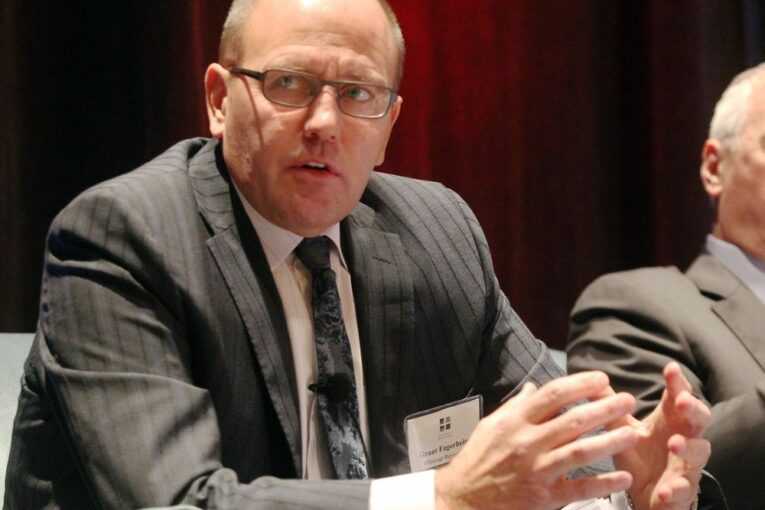
Canadian petroleum producers will be facing a new federal mandate to slash methane emissions by the end of this decade, and the industry will be handed new five-year climate targets by Ottawa.
With another Liberal minority government elected Monday, new energy and environmental policies are coming, although investors and oilpatch players see it as an evolution, not a revolution, of Canada’s climate objectives.
“The industry has gone through the stages of mourning and now we’re in the acceptance phase,” said Eric Nuttall, a senior portfolio manager with Ninepoint Partners, an investor in Canadian energy companies.
“It’s a nothing burger . . . I do not view last night’s outcome as a major catalyst one way or the other.”
On Monday, Liberal Leader Justin Trudeau won 158 seats in the federal election, more than any other party but not enough to secure a majority government.
The Canadian oil and gas industry is trying to puzzle out what the fallout will be for the sector, from the cost of meeting new regulations to the implications for future liquefied natural gas (LNG) projects.
“It’s deja vu, back to where we were,” Whitecap Resources CEO Grant Fagerheim said in an interview Tuesday.
“The energy sector wants an understanding of what the policies are, versus the moving goalposts and changing emissions targets that we continually see with no consultation.”
What is clear is bedrock Liberal climate and energy policies will remain in place, including a higher price on carbon and a national target of reaching net-zero emissions by 2050.
Two campaign promises will affect the province’s largest industry in the coming years.
The Liberals vowed to adopt regulations that require oil and gas companies to chop methane emissions by 75 per cent below 2012 levels by the end of this decade. (Methane doesn’t stay in the atmosphere as long as carbon dioxide, but has a far greater effect on the climate.)
Audrey Mascarenhas, CEO of Calgary-based Questor Technology, which helps oilpatch companies lower their methane emissions, said the target is “easily achievable” if government and industry focus on adopting practical solutions.
“We have to decide that we want to do this and all roll up our sleeves,” she said.
On the campaign trail, the Liberals also promised to adopt five-year emissions targets for the oil and gas industry “based on the advice of the Net-Zero Advisory Body,” starting in 2025.
These would be the first such benchmarks put in place, although the industry has invested heavily to cut emissions on a per-barrel basis in recent years.
In fact, emissions per barrel in the oilsands fell by 20 per cent between 2009 and 2018; they’re expected to tumble by at least 16 per cent by the end of this decade, according to a report last year by IHS Markit.
However, as total Canadian oil production has increased over the past 15 years, overall industry emissions have gone up.
“The challenge on climate change is to start to ratchet down emissions from oil and gas, and the use of oil and gas for transportation,” said Chris Severson-Baker of the Pembina Institute.
“Benchmarking and stepping down emissions — this is something that has been long overdue.”
While the federal focus on curbing emissions is not new, the national targets have changed.
In the Paris climate agreement, Canada pledged to lower domestic emissions by 30 per cent below 2005 levels by 2030. In April, the Trudeau government announced Canada would reduce emissions by 40 to 45 per cent in that period.
Oilsands producers such as Suncor Energy, Canadian Natural Resources and Cenovus Energy have already adopted net-zero targets by 2050 and are working together to hit those goals.
They are also looking for significant government assistance on major investments in carbon capture, utilization and storage projects (CCUS). The Liberals plan on introducing a tax credit for such big-ticket projects.
Energy investors say the new Liberal promises won’t make a major difference in how they view Canadian oil and gas companies.
“Even without these policies, the oil and gas sector was going that way anyway,” said Laura Lau, chief investment officer with Brompton Group.
The issue facing Canada’s oilpatch is how the government implements a plan to hit its Paris target and what will be required by producers, said Robert Johnston, managing director of global energy with Washington-based political risk consultancy Eurasia Group.
Along with tighter methane restrictions from Ottawa, he expects a “very limited appetite for new greenfield projects” that increase Canadian oil and gas output — and emissions.
“There are two big questions: carbon neutrality for existing production and what is the pathway for new oil and gas production, if any,” Johnston said.
“The more complicated issue is about the role of new greenfield oil supply, new export projects, new LNG. Where does that fit?”
With no major greenfield oilsands projects on the horizon, it’s more likely incremental production growth will come from expanding existing developments, as well as from conventional oil and gas drilling.
Precision Drilling CEO Kevin Neveu called the election a “colossal waste of time and money” for a no-change result.
He doesn’t expect the outcome will mean much for the sector — and that’s the problem.
Higher commodity prices should create favourable conditions for Canada to increase energy output to meet growing global demand, Neveu noted.
However, the Liberal government’s focus ignores how important oil and gas is to the economy and jobs, he said.
“This is rapidly becoming a wasted opportunity,” Neveu added.
“The goal-line keeps moving, and as they continue to move down this path, they make the goal-line both tougher to achieve and more expensive to achieve.”
Chris Varcoe is a Calgary Herald columnist.
You can read more of the news on source
